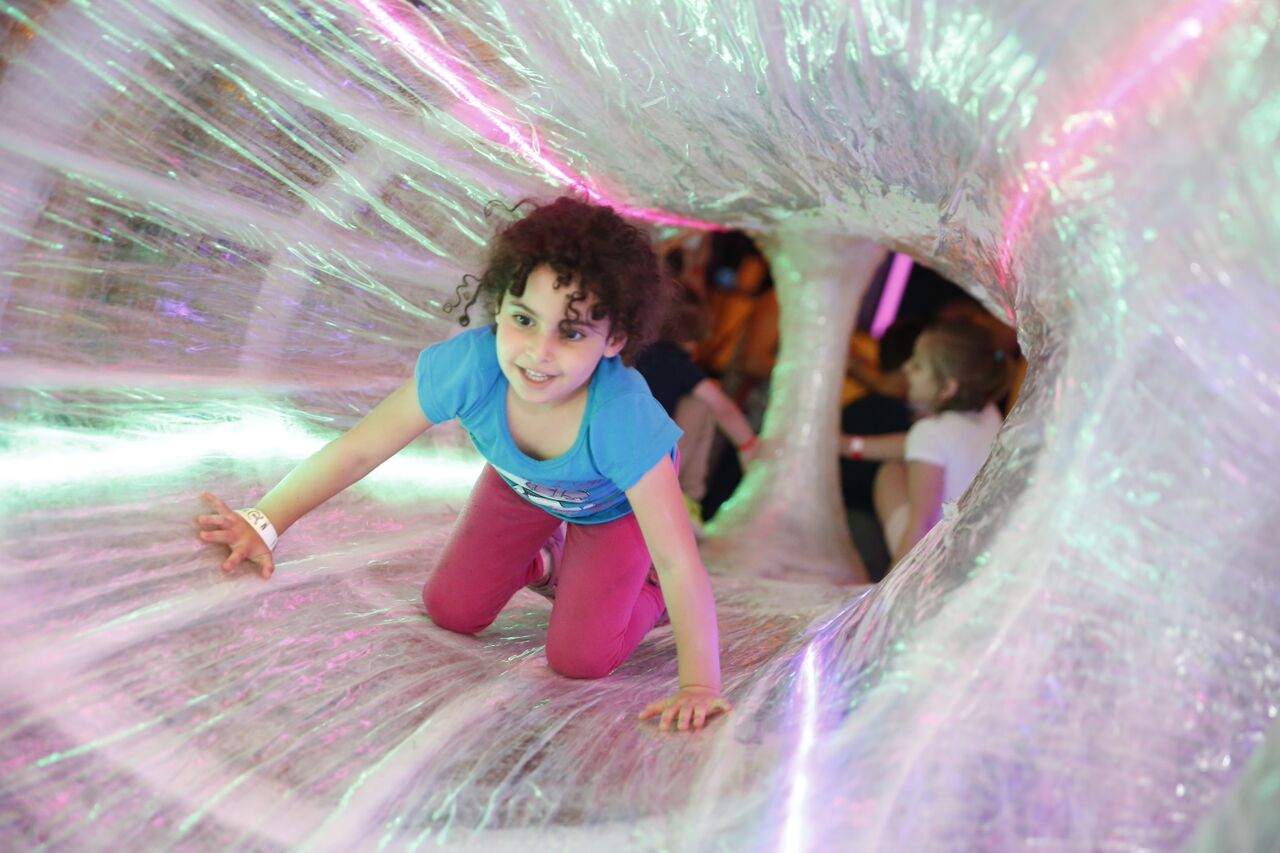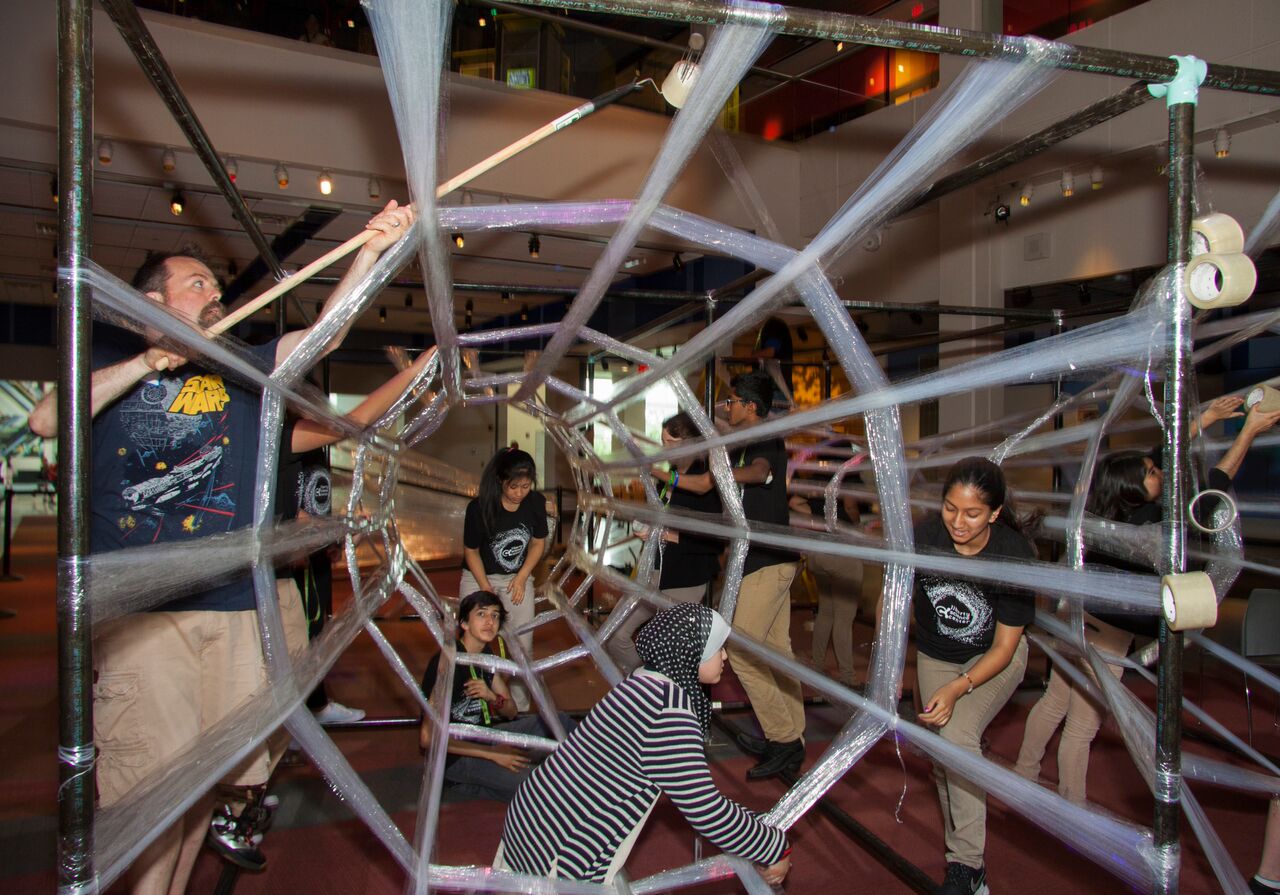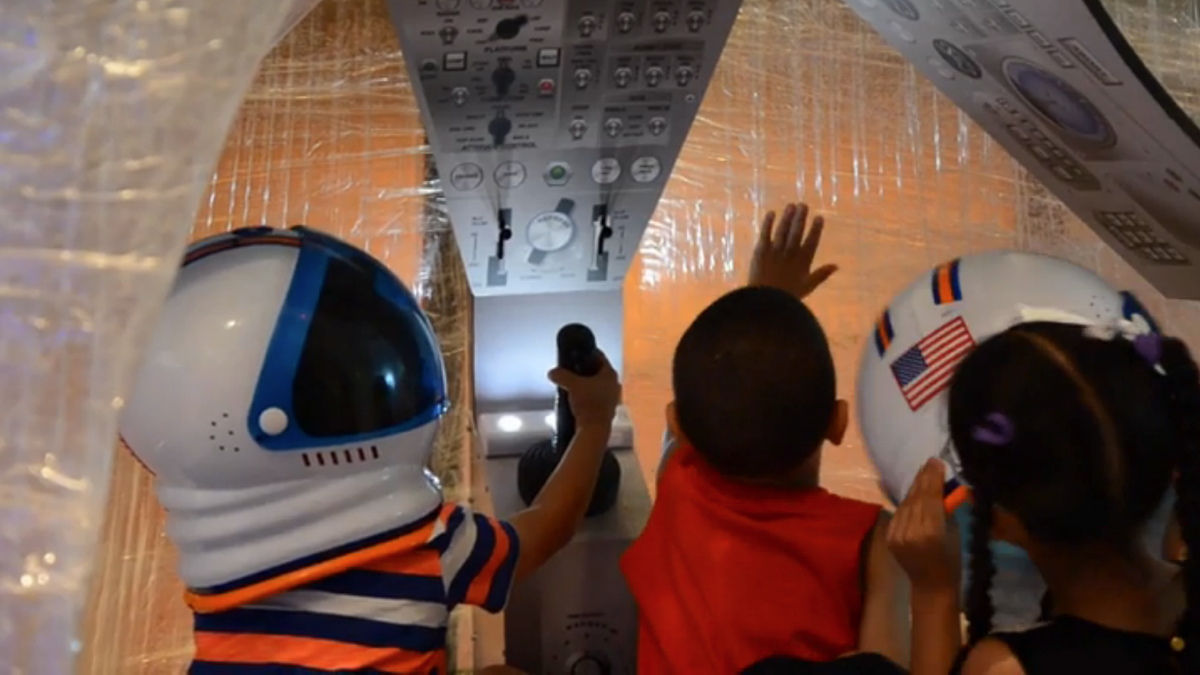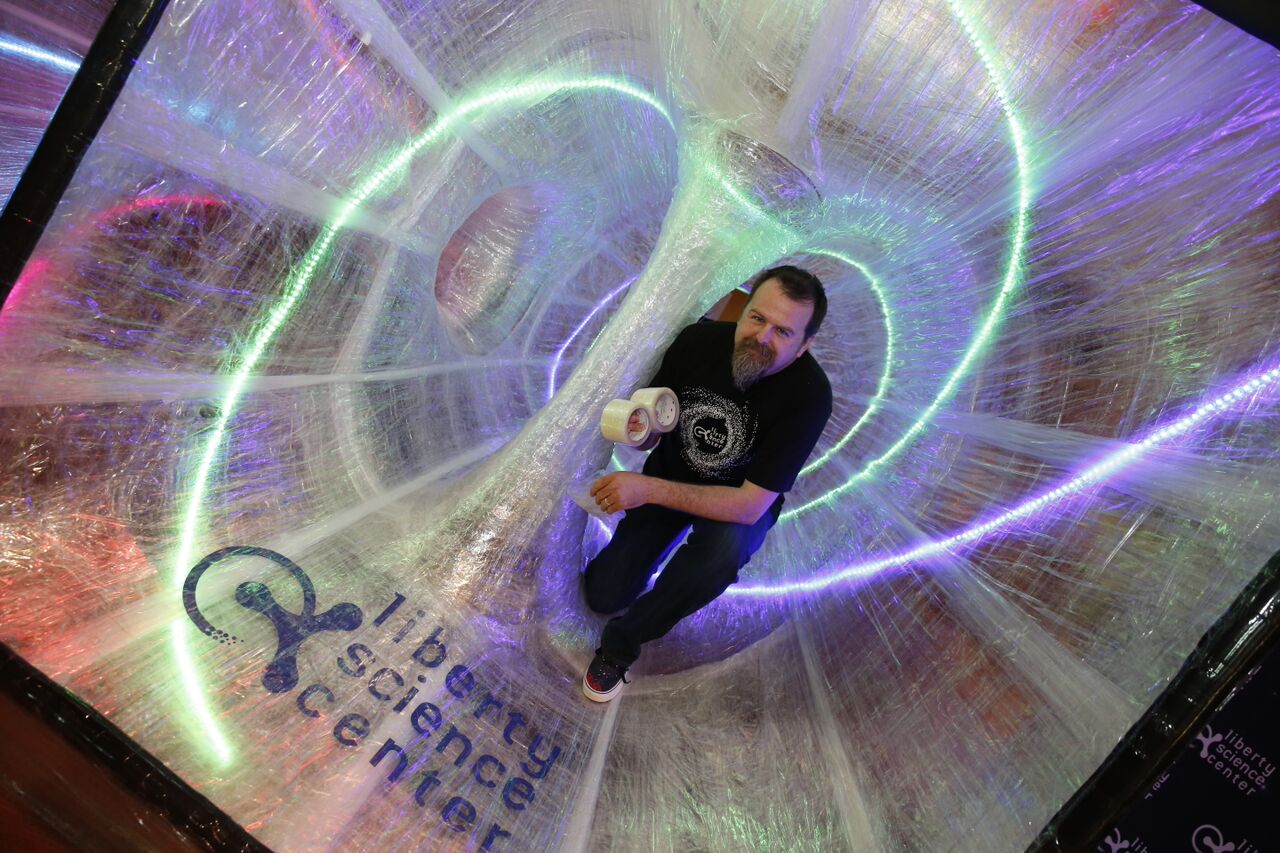Gemini Capsule & Wormhole Made of Tape Lure Little Explorers

The Liberty Science Center in New Jersey is currently inviting visitors to crawl through a space-time wormhole and explore a scale model of a Gemini capsule that sheltered astronauts in space in the 1960s — both made from rolls of translucent packing tape.
The Stephen-Hawking-inspired wormhole is full of odd offshoots to explore and strange stalagmites to scoot around. When you emerge from the other side, instead of finding yourself in another dimension of space, you get a packet of astronaut ice cream.
"Tape Gemini" and "Tape Wormhole" are part of the Liberty Science Center's summer-long Space Party and the launch of a new space exhibit. [Image Gallery: Tape Gemini and Tape Wormhole]
Artist Eric Lennartson and volunteers built Tape Gemini and Tape Wormhole in just three days, using 18 miles' worth of packing tape. Lennartson has built explorable tape sculptures before, but never with a space theme.
"It's a one-to-one scale for the height and width," Lennartson told Space.com, of the Tape Gemini capsule. "It really gives a sense — it may look tall, but that thing is small. And when you think about what the materials are outside protecting the astronauts, it's very fragile. You're very vulnerable out there in space."
Going inside the Gemini capsule, children put on space helmets and sat in front of the replica control panel, imagining they were in space. During the exhibit opening, there were also opportunities to make paper-bag space helmets and launch rockets made of straws into the air.
But the main attraction was clearly exploring the tape structures. Adults fit inside, too. "It instantly shaves half the age off what you are, because you're obviously back being a kid again," Lennartson said.
Breaking space news, the latest updates on rocket launches, skywatching events and more!
The Liberty Science Center commissioned the structures from Lennartson, who had never built one on the East Coast before, to supplement the hands-on feel of their new exhibit, "Beyond Planet Earth: The Future of Space Exploration." The exhibit explores the question "What will humans discover next in their quest to explore space?" The science center also has an exhibition celebrating the Hubble Space Telescope's 25th anniversary.
"This is an interactive science center, so that means it's not just artifacts in a wall," Paul Hoffman, Liberty Science Center president and CEO, told Space.com. "We have incredible space artifacts, but we also want experiences that our guests can really participate in. You get to take the psychological test that NASA would give you to see if you have what it takes to get to Mars, you get to see if you can shoot down asteroids."
Both Hoffman and Lennartson see the potential of the tape structures and museum exhibits to turn children on to science for the long term — Hoffman himself was first drawn to science when he saw the moon landing on television as a child.
But as for the tape wormhole's longevity?
"We hope it will last a month," Hoffman said.
Email Sarah Lewin at slewin@space.com or follow her @SarahExplains. Follow us @Spacedotcom, Facebook and Google+. Original article on Space.com.

Sarah Lewin started writing for Space.com in June of 2015 as a Staff Writer and became Associate Editor in 2019 . Her work has been featured by Scientific American, IEEE Spectrum, Quanta Magazine, Wired, The Scientist, Science Friday and WGBH's Inside NOVA. Sarah has an MA from NYU's Science, Health and Environmental Reporting Program and an AB in mathematics from Brown University. When not writing, reading or thinking about space, Sarah enjoys musical theatre and mathematical papercraft. She is currently Assistant News Editor at Scientific American. You can follow her on Twitter @SarahExplains.



